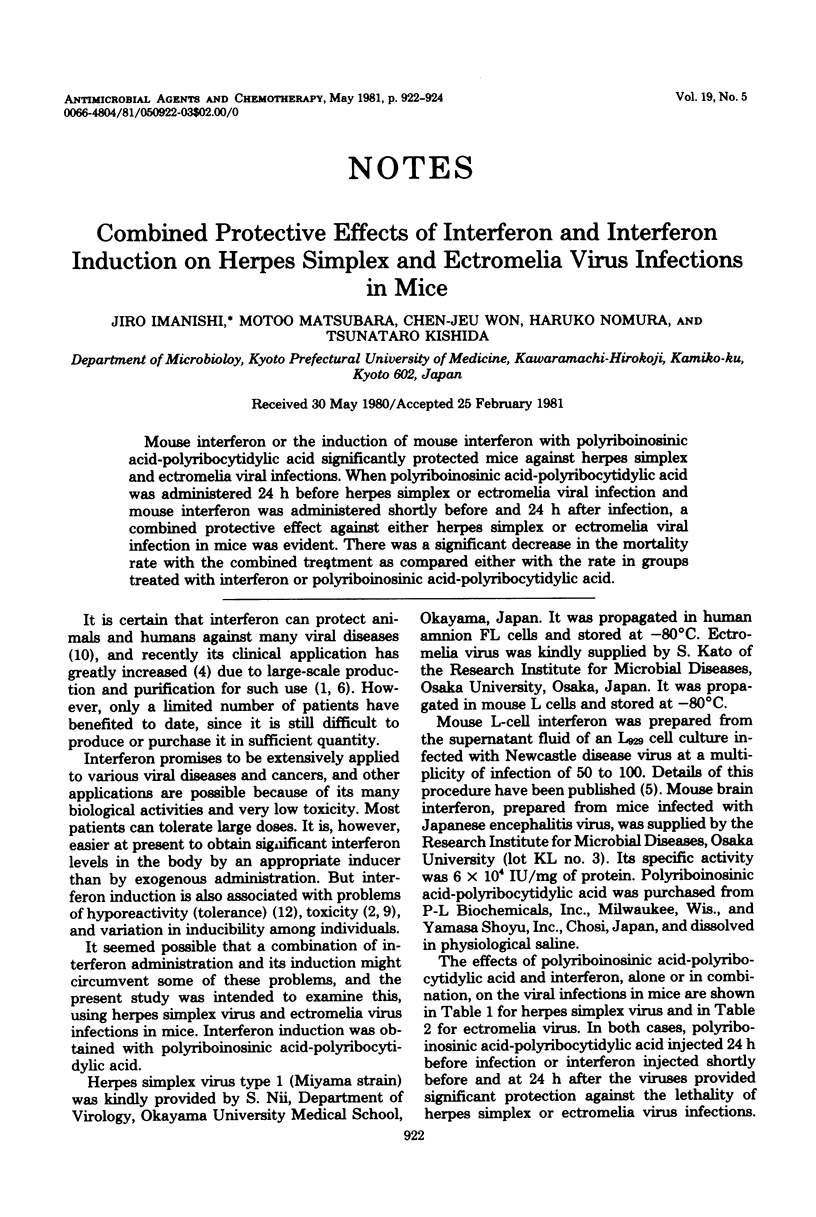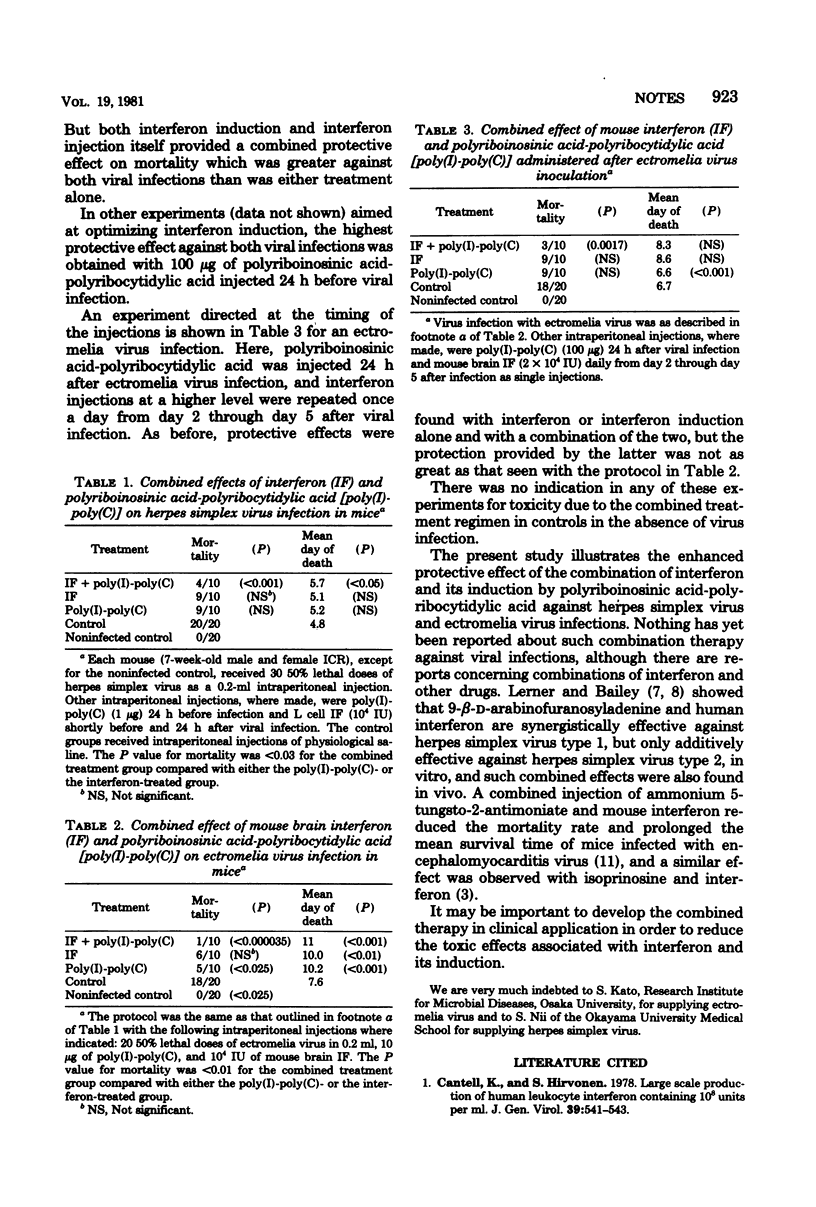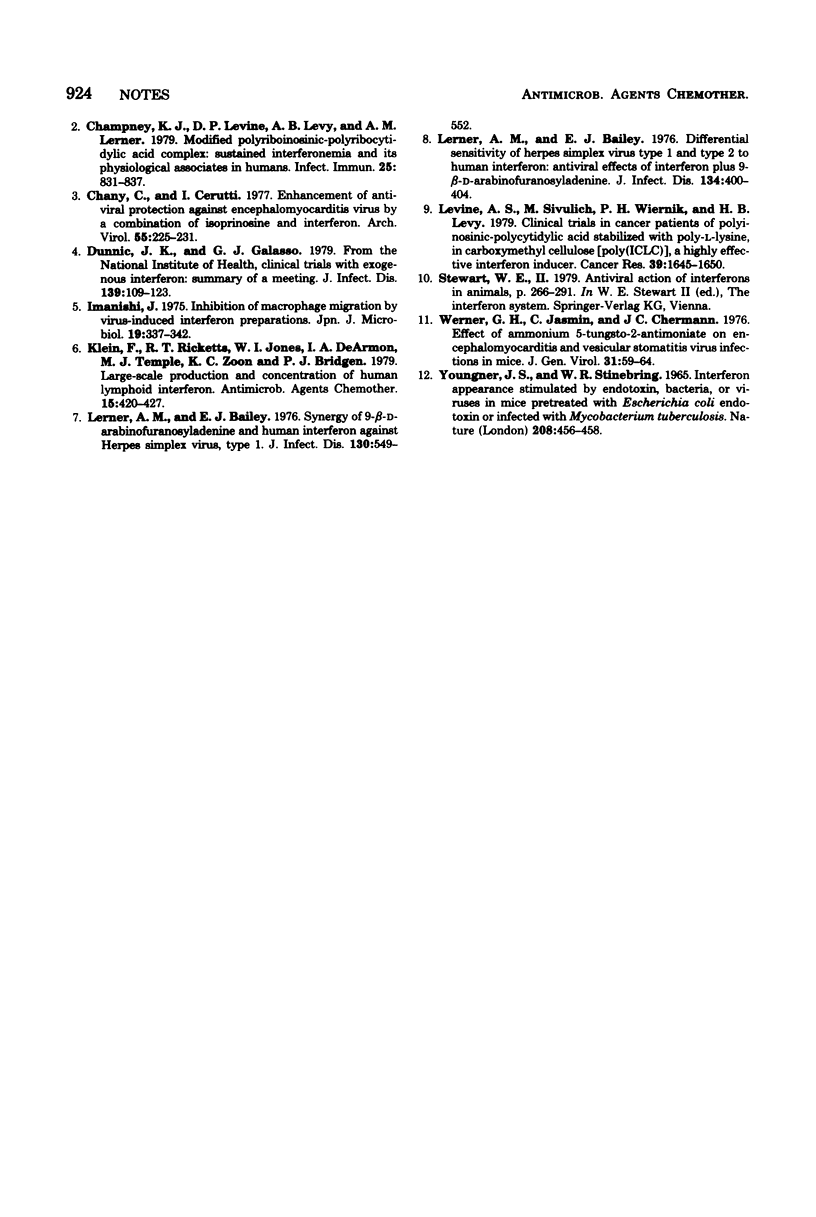Abstract
Mouse interferon or the induction of mouse interferon with polyriboinosinic acid-polyribocytidylic acid significantly protected mice against herpes simplex and ectromelia viral infections. When polyriboinosinic acid-polyribocytidylic acid was administered 24 h before herpes simplex or ectromelia viral infection and mouse interferon was administered shortly before and 24 h after infection, a combined protective effect against either herpes simplex or ectromelia viral infection in mice was evident. There was a significant decrease in the mortality rate with the combined treatment as compared either with the rate in group treated with interferon or polyriboinosinic acid-polyribocytidylic acid.
Full text
PDF


Selected References
These references are in PubMed. This may not be the complete list of references from this article.
- Cantell K., Hirvonen S. Large-scale production of human leukocyte interferon containing 10(8) units per ml. J Gen Virol. 1978 Jun;39(3):541–543. doi: 10.1099/0022-1317-39-3-541. [DOI] [PubMed] [Google Scholar]
- Champney K. J., Levine D. P., Levy H. B., Lerner A. M. Modified polyriboinosinic-polyribocytidylic acid complex: sustained interferonemia and its physiological associates in humans. Infect Immun. 1979 Sep;25(3):831–837. doi: 10.1128/iai.25.3.831-837.1979. [DOI] [PMC free article] [PubMed] [Google Scholar]
- Chany C., Cerutti I. Enhancement of antiviral protection against encephalomyocarditis virus by a combination of isoprinosine and interferon. Arch Virol. 1977;55(3):225–231. doi: 10.1007/BF01319908. [DOI] [PubMed] [Google Scholar]
- Dunnick J. K., Galasso G. J. Clinical trials with exogenous interferon: summary of a meeting. J Infect Dis. 1979 Jan;139(1):109–123. doi: 10.1093/infdis/139.1.109. [DOI] [PubMed] [Google Scholar]
- Klein F., Ricketts R. T., Jones W. I., DeArmon I. A., Temple M. J., Zoon K. C., Bridgen P. J. Large-scale production and concentration of human lymphoid interferon. Antimicrob Agents Chemother. 1979 Mar;15(3):420–427. doi: 10.1128/aac.15.3.420. [DOI] [PMC free article] [PubMed] [Google Scholar]
- Lerner A. M., Bailey E. J. Differential sensitivity of herpes simplex virus types 1 and 2 to human interferon: antiviral effects of interferon plus 9-beta-D-arabinofuranosyladenine. J Infect Dis. 1976 Oct;134(4):400–404. doi: 10.1093/infdis/134.4.400. [DOI] [PubMed] [Google Scholar]
- Lerner A. M., Bailey E. J. Synergy of 9-beta-D-arabinofuranosyladenine and human interferon against Herpes simplex virus, type 1. J Infect Dis. 1974 Nov;130(5):549–552. doi: 10.1093/infdis/130.5.549. [DOI] [PubMed] [Google Scholar]
- Levine A. S., Sivulich M., Wiernik P. H., Levy H. B. Initial clinical trials in cancer patients of polyriboinosinic-polyribocytidylic acid stabilized with poly-L-lysine, in carboxymethylcellulose [poly(ICLC)], a highly effective interferon inducer. Cancer Res. 1979 May;39(5):1645–1650. [PubMed] [Google Scholar]
- Werner G. H., Jasmin C., Chermann J. C. Effect of ammonium 5-tungsto-2-antimoniate on encephalomyocarditis and vesicular stomatitis virus infections in mice. J Gen Virol. 1976 Apr;31(1):59–64. doi: 10.1099/0022-1317-31-1-59. [DOI] [PubMed] [Google Scholar]
- Youngner J. S., Stinebring W. R. Interferon appearance stimulated by endotoxin, bacteria, or viruses in mice pre-treated with Escherichia coli endotoxin or infected with Mycobacterium tuberculosis. Nature. 1965 Oct 30;208(5009):456–458. doi: 10.1038/208456a0. [DOI] [PubMed] [Google Scholar]


